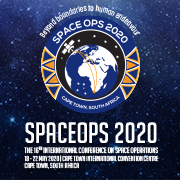›Transformational Science with ALMA: From Dust to Rocks to Planets Formation and Evolution of Planetary Systems
The Atacama Large Millimeter/sub-millimeter Array (ALMA) is the world's most complex ground-based astronomical observatory. While still under construction, ALMA is opening a window into cosmic origins from previously inaccessible cold and dark parts of our universe. With its anticipated 66 antennae in full operations, ALMA will deliver astonishing imaging capabilities and sensitivity that will surpass any other telescope at millimeter and submillimeter wavelengths. The first light observations from ALMA, begun in September 2011, are exciting researchers with new views of gas and dust harboring young stars and planetary systems. We are on the threshold of an explosion of observations that will transform our knowledge and understanding of how solar systems, planets, and life all begin.
In this workshop, investigators from around the world will meet in Hawaii to explore the evolution of material in protostellar disks from formation to dissipation. The Island of Hawaii is home to the largest observatory in the Northern Hemisphere, and is the site of extensive, collaborative, international research efforts. A focus of the workshop will be the processing of the gas and dust components, and the growth of planetesimals. We will also explore chemical changes, and radiative signatures at millimeter and submillimeter wavelengths. We will showcase results from ALMA early science projects and feature synergies with other telescopes that can help to advance this field, particularly those sited on the island of Hawaii.
This workshop will prepare us for the exciting adventures ahead in the new era and will not only focus on the new opportunities in astronomy but also foster new collaborations with geologists, chemists, engineers and biologists to investigate the origins of cosmic material in the universe. This workshop, with its broad, international scope, will allow students and recent post-docs to learn about the cutting-edge, interdisciplinary research opportunities available with ALMA. Most importantly, beginning researchers will participate in the workshop in a substantial, meaningful way by presenting posters and partnering with mentors before and during the workshop. We hope these collaborations will continue well beyond the end of this meeting and a whole new set of researchers will emerge to use ALMA.
Specifically, this workshop will address the following questions:
- When do circumstellar disks first form and how?
- How does gas evolve in circumstellar disks?
- What is the origin of the gaps and holes in "transition disks"?
- What are the observational signatures of embedded planets in circumstellar disks?
- What is the process of grain growth and evolution?
- Can we fully ascertain the physical and chemical processing of planetary materials, and their connections to meteorites, planetesimals, comets, and KBOs?
- What is the full extent of disk chemistry and what is the detectable limit of molecular material in disks?
- What do millimeter continuum and spectral line observations tell us about solar system bodies?
- Polarimetry and magnetic activities in the protostellar envelopes and inner disks
- Instruments in Hawaii that could facilitate the sciences featured in this workshop
Track this event on your Apple calendar














 United States
United States